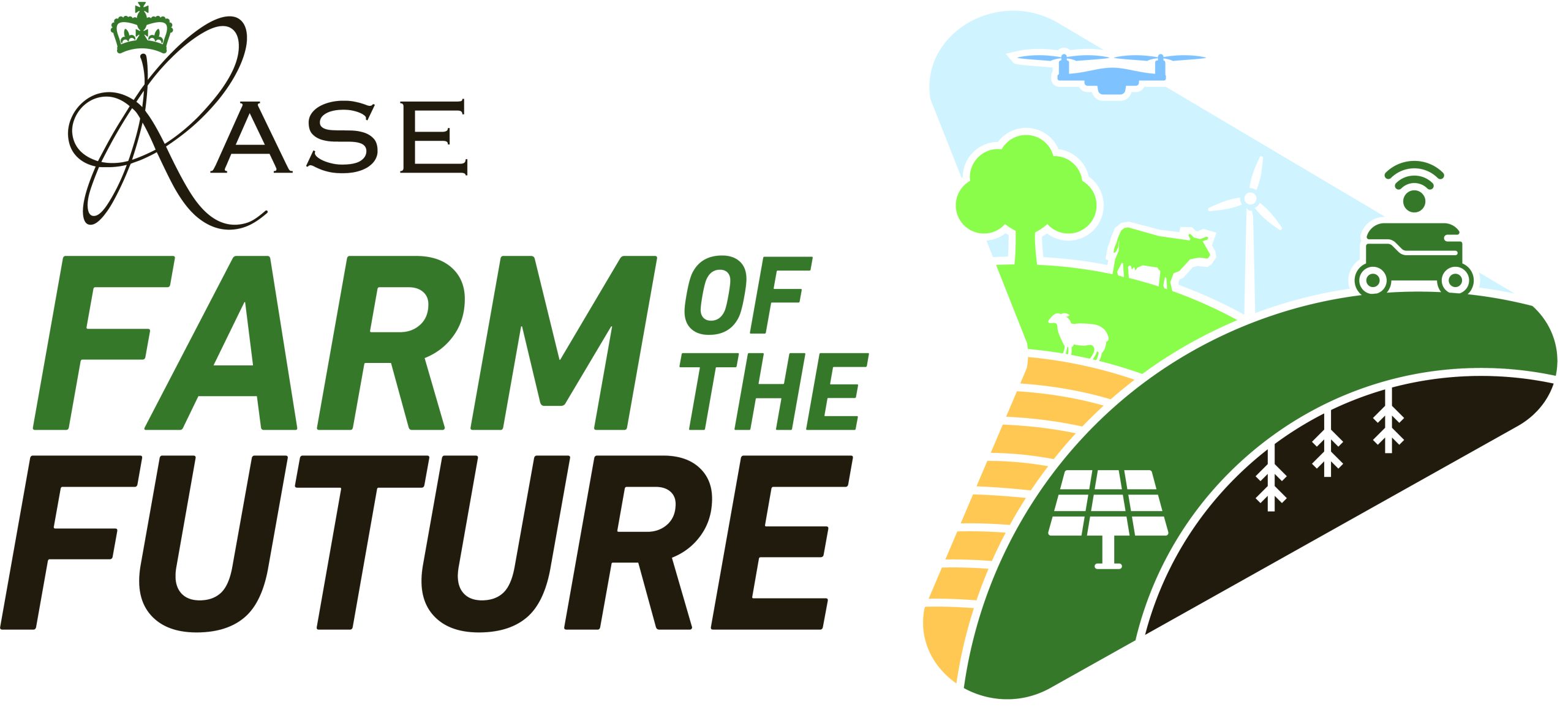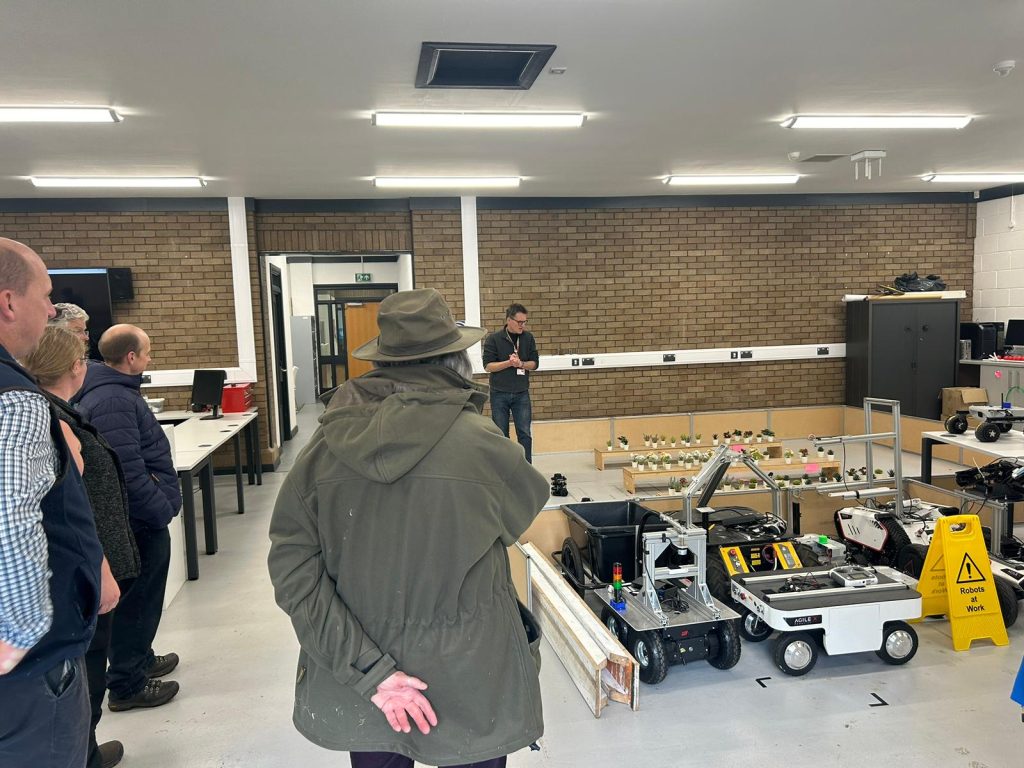Agri-tech developments can impact everything from herd health to monitoring of carbon flows in the soil, and include the introduction of robotic systems to carry out tasks which historically have been done by people.
The Riseholme Campus at the University of Lincoln is a fantastic place to explore agri-tech developments, with numerous examples of putting technology into practice on the university farm. There are also many nature-based solutions being used to increase farm resilience, showcasing how use of technology and farming with nature can co-exist and enhance farm business resilience together.
The following blog includes five of the key themes from the ‘Farm of the Future: Agri-tech in Action’ day which was hosted at the Lincoln Institute for Agri-food and Technology in October 2024.
1. Technologies for herd management
The pedigree herd of Lincoln Red Cattle at Riseholme are managed to ensure both high health and performance, while championing biodiversity on the farm. The university is DNA testing the cattle to gain a better understanding of cattle myostatins and genetic potential. They are also working with the Lincoln Red Cattle Society to provide data for the wider breed development of Lincoln Reds.
The university also uses a bolus monitoring system, allowing them to keep a continuous eye on individual cow health. The bolus sits inside each cow’s reticulum and contains a sim card, which sends information to the farmers about the rumination time, water intake, temperature and activity of each cow. This enables them to spot the warning signs of potential issues, and intervene before problems escalate. The bolus monitoring brings benefits for both cow health and wellbeing, and can save time and veterinary costs due to issues being resolved before they become costly problems.
2. Robotics in agriculture
At the Barclays Eagle Lab on campus there is research into the use of robotics in agriculture. Multiple areas of the supply chain are being considered, from infield to processing, including the use of cameras, robotic arms and tools to complete tasks.
A discussion was had about the speed of the work, as currently the robots have a much slower work pace than a human, however as the robot can work 24hrs a day every day, it was seen that overall productivity may not be too dissimilar.
3. Researching carbon flows
At field-scale, the University of Lincoln have installed a carbon flux tower which is measuring the carbon coming down into a crop and going up into the atmosphere. This is on a limestone brashy soil. Working with BBRO, LIAT have undertaken a large scale project looking specifically at whether Sugar Beet takes up more carbon than other crops grown in a season.
Dr Georgina Barratt from BBRO talked attendees through her research into the carbon flows of sugar beet, having been monitoring how much carbon was being emitted or stored on an hourly basis from the crop using the data gathered from the flux tower.
Part of the research is focusing on understanding the different emissions from a conventional field compared to a field using cover crops.
BBRO will continue to build up the data sets which will ultimately support carbon benchmarking of sugar beet crops, for example providing data for both carbon calculators and policy decision making.
So far, they have seen that sugar beet uptakes CO2 for a longer period of the year than spring barley, and that healthier crops generally sequester more CO2 demonstrating the importance of good farm practice for economic and environmental benefits.
4. Agroforestry
Alongside the developments in agri-tech at the campus, farmers attending the event were also shown some natural approaches to improving farm systems and design. For example. Stephen Briggs delivered a session showing the university farm’s agro-forestry system, which includes a 4-way mix of native tree species which will be harvested for timber.
In typical cropping systems, utilisation of sunlight can be as low as 62% during some periods of the year. Agroforestry systems can maximise productivity by mixing two land use systems which photosynthesise at different times, which enables improved utilisation of available sunlight.
Research at Riseholme has been looking at the growth patterns of the crops in the alleys, where so far it has been found that the plants closest to the tree rows grow best. This is potentially because the trees support better management of water stocks in the soil and also because there more mycorrhizal activity closer to the tree roots. There is a risk that this may be reversed in time if the trees begin to create more shade as they mature, and so this will be observed and researched in coming years.
5. Natural flood management
Matt Parr from the Environment Agency led a tour around the natural flood management demonstration site at Riseholme Campus. This provided a contrast to the robotics and more agri-tech focussed sessions of the day, as attendees were advised to read the landscape and learn from nature. It was discussed how often low input, low maintenance and low cost solutions can be the most effective. As an on-site example, attendees were shown ways to ‘slow the flow’ of water in the uplands and allow managed areas to flood, to reduce the risk and impact of flooding downstream.
There is funding currently available for farmers who wish to implement natural flood management strategies on their land, and attendees saw pictures of a range of approaches to achieve this, from large projects re-wiggling rivers and changing the landscape around them, to smaller, more simple approaches such as adding leaky living willow dams.
With the ever unpredictable and increasingly wet weather this was a very timely and topical talk to understand how often taking a step back and following nature’s approach rather than installing large infrastructure can be cheaper, while also bringing additional benefits to surrounding biodiversity and can help sustain the long-term resilience of a farm business.
The day brought farmers from across the region and further afield to see how different technological developments could be put to use in agricultural systems. It formed part of the RASE Farm of the Future series of events, more details of which can be found here.

